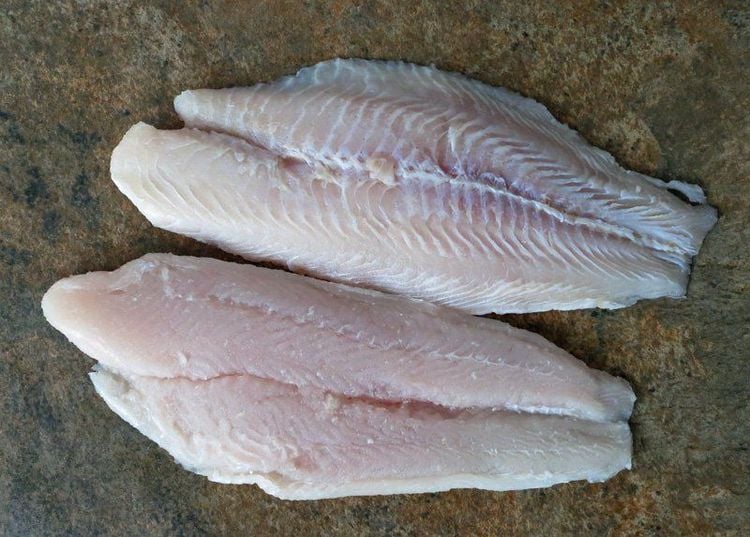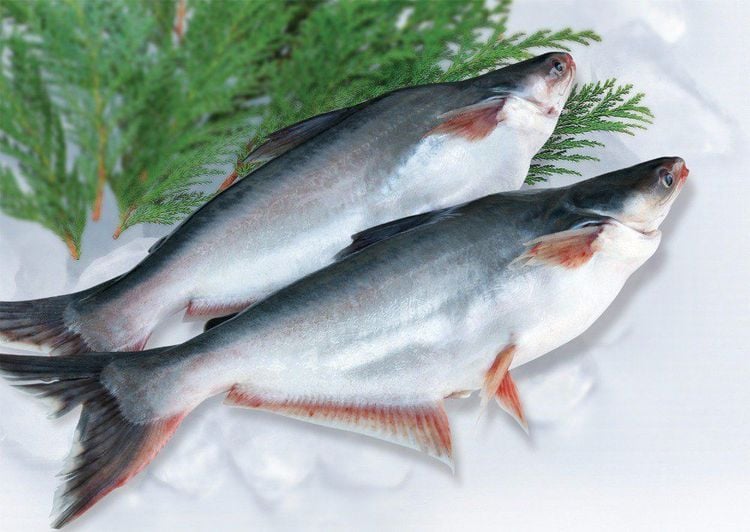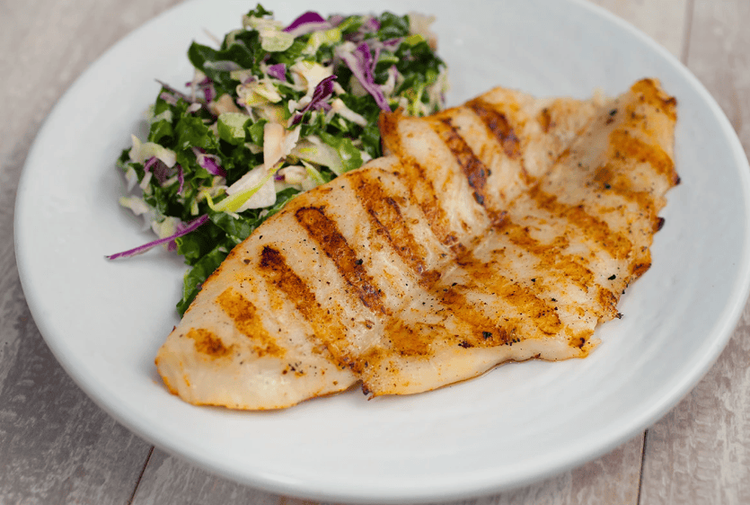This is an automatically translated article.
Swai fish is an affordable fish with a pleasant taste and nutritional value, which has been exported to the US market by Vietnam in the past few decades. However, many people who eat swai may not be aware of the potential health risks because this fish is often raised on large fish farms.
1. What is Swai and where does it come from?
Swai is a white fish with a firm texture and a neutral taste. It is easy to combine with many other ingredients when preparing dishes. According to the US National Oceanic and Atmospheric Administration (NOAA), the swai ranks as the sixth most common fish in the country.
Swai fish is native to the Mekong River, Asia. However, swai is most imported from fish farms in the Mekong Delta of Vietnam, which is one of the largest exporters of swai fish in the world.
Originally when swai was imported into the US it was called Asian catfish. They were then scientifically named Pangasius hypophthalmus. Other names for swai and some similar species are panga, pangasius, sutchi, cream dory, striped catfish, Vietnam cat, tra, basa, and - although it's not a shark - it's still called a shark shark or Siamese shark.
2. Nutritional value
Fish are very healthy because they provide lean protein and heart-healthy omega-3 fats. The protein content of swai fish is average compared to other common fish, but it provides very little omega-3 fats.
A 113-gram serving of uncooked swai meat contains:
Calories: 70 Protein: 15 grams Fat: 1.5 grams Omega-3 fats: 11 mg Cholesterol: 45 grams Carbs: 0 grams Sodium: 350 mg Niacin : 14% of the recommended daily intake refer to Vitamin B12 : 19% of the recommended daily amount Selenium: 26% of the recommended daily amount

Cá Swai chứa lượng vi chất quan trọng cho sức khỏe người dùng
The sodium in swai fish may be higher or lower than the number given above depending on the amount of sodium tripolyphosphate and additives added during storage and processing.
Swai is an excellent source of selenium. They are also a good source of niacin and vitamin B12. However, the levels of these substances in fish vary depending on what kind of fish feed is eaten during the farming process.
Fish swai is often not a healthy diet. They usually eat rice bran, soybeans, canola. Soybean and canola products are often genetically modified and may not be a healthy food even for fish. However, this is a controversial issue.
3. Environmental issues related to swai . fish farm
The impact of swai fish farms on the ecosystem is a major concern of the community and environmentalists. The “fishery in the bay” program has listed swai as a fish to avoid, as some swai fish farms actually generate livestock waste and illegally dump it into the river.
Improper wastewater treatment is believed to be a major cause as swai fish farms use a lot of chemicals, including disinfectants, antiparasitics and antibiotics.
In addition, this livestock industry also releases an acceptable level of mercury into the environment. However, in another study, the team showed that mercury emissions from swai farms were 50% higher than the limit set by the World Health Organization.
These issues point to the need to ensure better fish water quality at swai farms and a need for closer inspection of the quality of the fish during export.

Hình ảnh loại cá Swai trên thị trường hiện nay
4. Antibiotics are used a lot at swai . fish farms
When swai and other fish are kept together in a crowded fish environment, the risk of infectious diseases in fish increases. In one study, 70-80% of swai fish samples exported to Poland, Germany and Ukraine were contaminated with Vibrio bacteria, a bacteria commonly responsible for food poisoning in humans.
To fight bacterial infections, swai is often given antibiotics and other medications. As a result, antibiotic residues may remain in the fish, and leach into nearby water sources.
In a study of imported seafood, swai and some other Asian seafood frequently exceeded the allowable limit for antibiotic residues. Vietnam has the highest number of violations among fish exporting countries.
Not long ago, 84,000 pounds of frozen swai fish fillets imported from Vietnam and distributed in the US were recalled for not meeting US requirements for drug residues and other contaminants in food. Products.
In addition, even when fish meet the criteria for residues of antibiotics and other drugs, regular use of these drugs can promote antibiotic resistance in fish and persist in fish meat. .
Some of the antibiotics used in fish are similar to those used to treat infections in humans. If farms overuse and bacteria become resistant to drugs, the result is that people increasingly do not have effective treatments for some diseases.
5. You can eat swai fish dishes at restaurants without even knowing it.
In a study by Oceana, an international ocean conservation organization, swai was one of three fish commonly used as an alternative to more expensive fish. In fact, swai was sold as 18 different types of fish - often mislabeled as perch, grouper or kingfish.
Such mislabeling is recorded in restaurants, supermarkets and seafood processing factories. Sometimes this mislabeling is a deliberate scam because swai costs less. Some other cases are accidental.

Cá Swai được sử dụng tại một số nơi thay thế cho các loại cá đắt đỏ
Seafood often travels a long distance from where it was caught to where you bought it, making it more difficult to trace its true origin. For example, it is not easy for restaurant owners to check whether the information written on the box of fish they buy is correct or untrue.
Furthermore, it is difficult to pinpoint the exact type of fish you are eating, for example, if you are ordering fish sandwiches at a restaurant without specifically asking for the type of fish used in the pie. your sandwich, it could be swai.
In a study of fish products served at 37 restaurants in a southeastern US city, about 67% of the dishes that simply listed "fish" on the menu were actually swai fish. .
6. How to buy swai and better alternatives
If you like swai, buy from reputable brands and certified by ecological organizations for quality, with logo printed on the packaging. Those certifications show that efforts to reduce agricultural wastes contribute to climate change and harm water quality.
Also, you shouldn't eat raw swai or raw fish. You should cook fish until the temperature of the fish reaches a minimum of 62.8oC to kill harmful bacteria, such as Vibrio.
If you don't choose swai, there are many good alternatives. If you want to choose fish rich in omega-3, to avoid mercury residue in fish you can choose wild salmon, sardines, herring, anchovies, and freshwater trout.
Finally, eat a variety of fish instead of always eating the same fish. This helps to reduce the risk of overconsumption of contaminants in the same fish.
Please dial HOTLINE for more information or register for an appointment HERE. Download MyVinmec app to make appointments faster and to manage your bookings easily.
Reference source: healthline.comSEE MORE
Eating raw fish is very susceptible to tapeworms 12 foods rich in Omega 3 The miraculous effect of fish oil







